Katie Wilhelm
Designer and Consultant
Print Design for an Artistic Research Project Addressing Climate Change and Deconolinization
“We had the pleasure to work with Katie along with a large team from our GardenShip and State exhibition at Museum London. Together, we developed an innovative take-away brochure that encourages creative engagement by audiences in response to the show.
Katie Wilhelm was wonderful to work with on this complex initiative: she is organized, highly skilled, and extremely professional.”
“GardenShip and State asks how people can work together, as a global community, toward restoring the planet—while respecting differences, and seeking to mend divisions and address injustices brought about by colonialism.”
About GardenShip and State
“GardenShip and State is an artistic research project conceived at the intersection of environmental critique, decolonial theory, and artistic practice. The project examines urgent issues confronting us today: climate change and global warming and the measures states and non-state actors can, or should, take to resolve them. These challenges are of global concern because local actions and global effects are intertwined, as evidenced by the destructiveness of the environmental crisis on humans and other than humans experiencing the effects of colonialism.
GardenShip and State asks how people can work together, as a global community, toward restoring the planet—while respecting differences, and seeking to mend divisions and address injustices brought about by colonialism.
This exhibition emerged from an artistic research plan, nearly five years ago. We began by seeking collaborators and supporters, artists and writers, to participate in, and lend voice to a cross-disciplinary project addressing what is arguably the problem of our times: environmental catastrophe. The result is GardenShip and State.
Museum London is located on a site of intersection, at the forks of the Deshkan Ziibi, also known as the Thames River. GardenShip and State is, similarly, an expression of confluence. It brings together a diverse group of 20 artists and writers from Turtle Island: from areas within Canada and the United States. Through work comprising textiles, photography, sculpture, video, gardening, and installation, the artists in this exhibition engaged issues of decolonial critique, environmental activism, and protest against government and industry complicity in the ongoing climate crisis. GardenShip and State invites audiences to engage with aesthetically rich and culturally complex artworks that are provocative, challenging, and also sources of hope.”
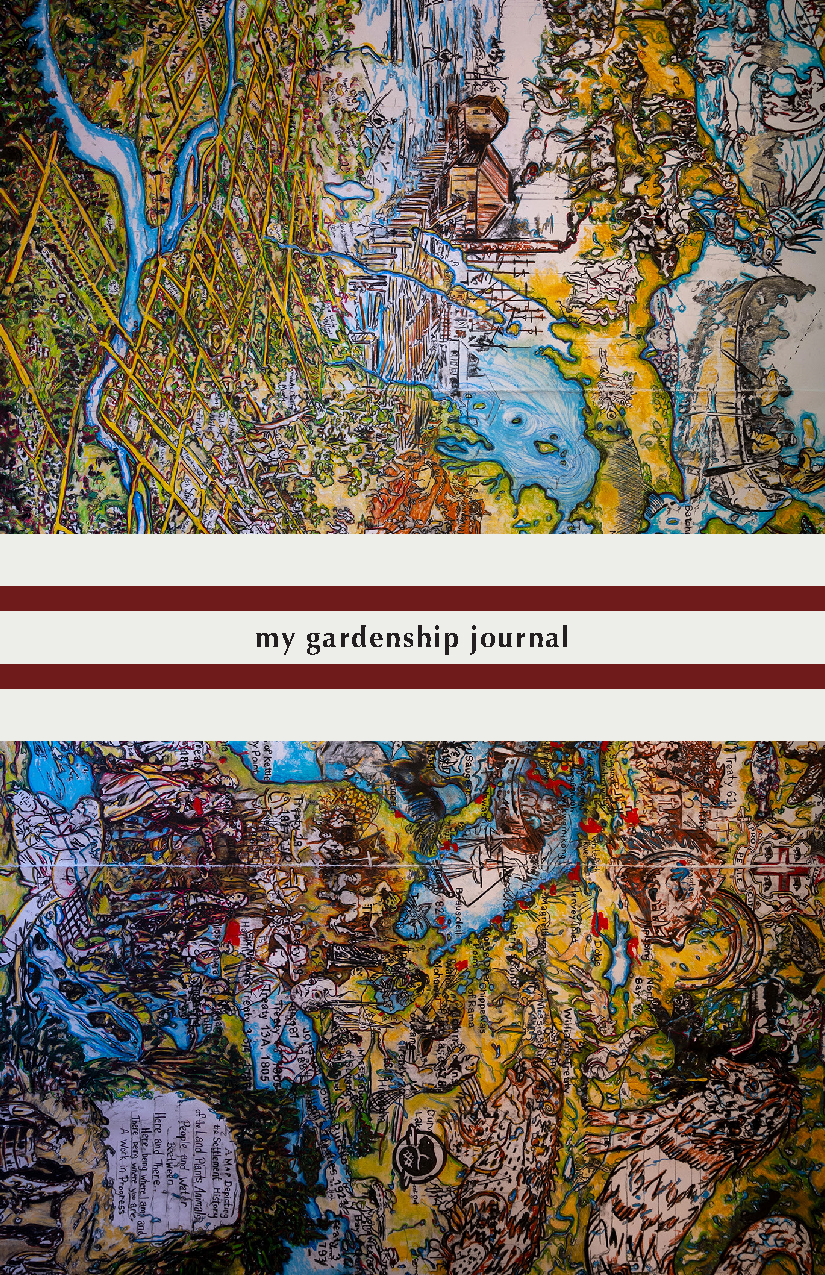

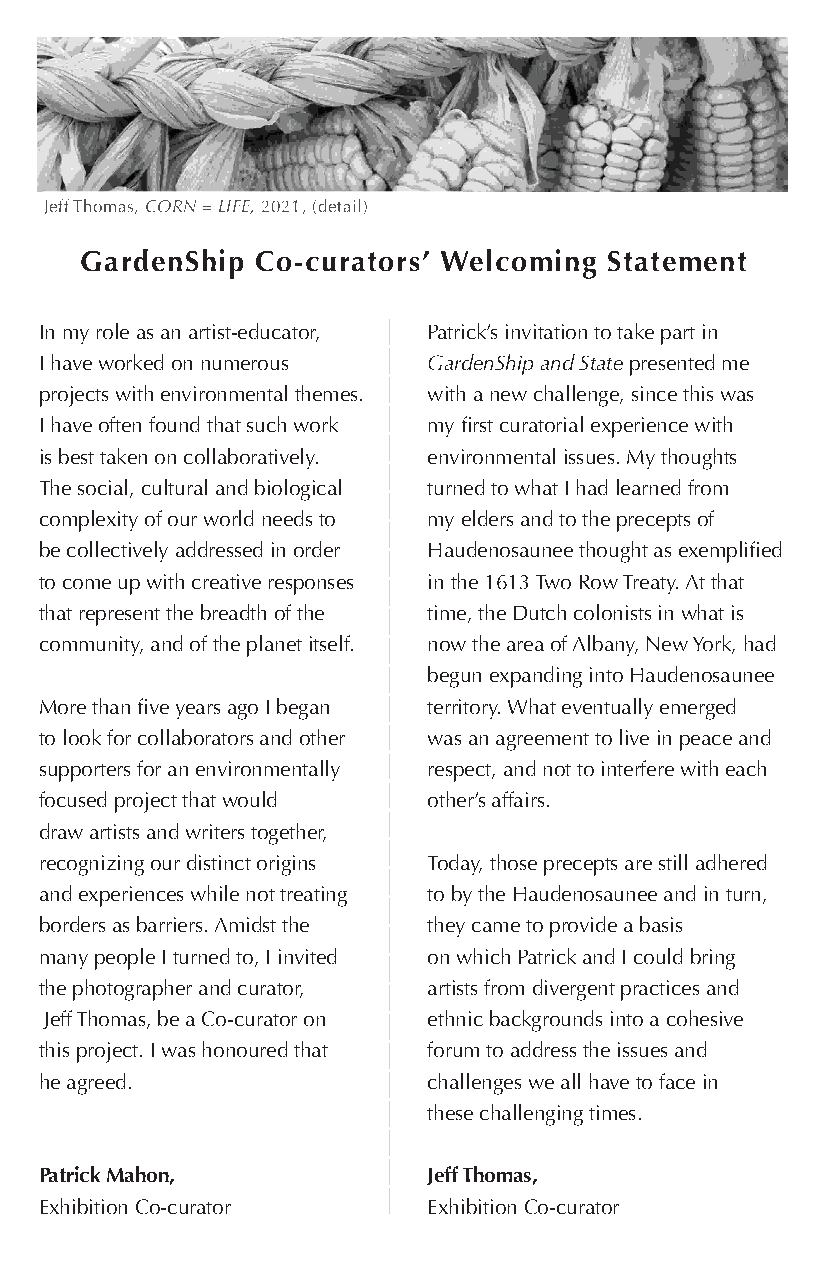
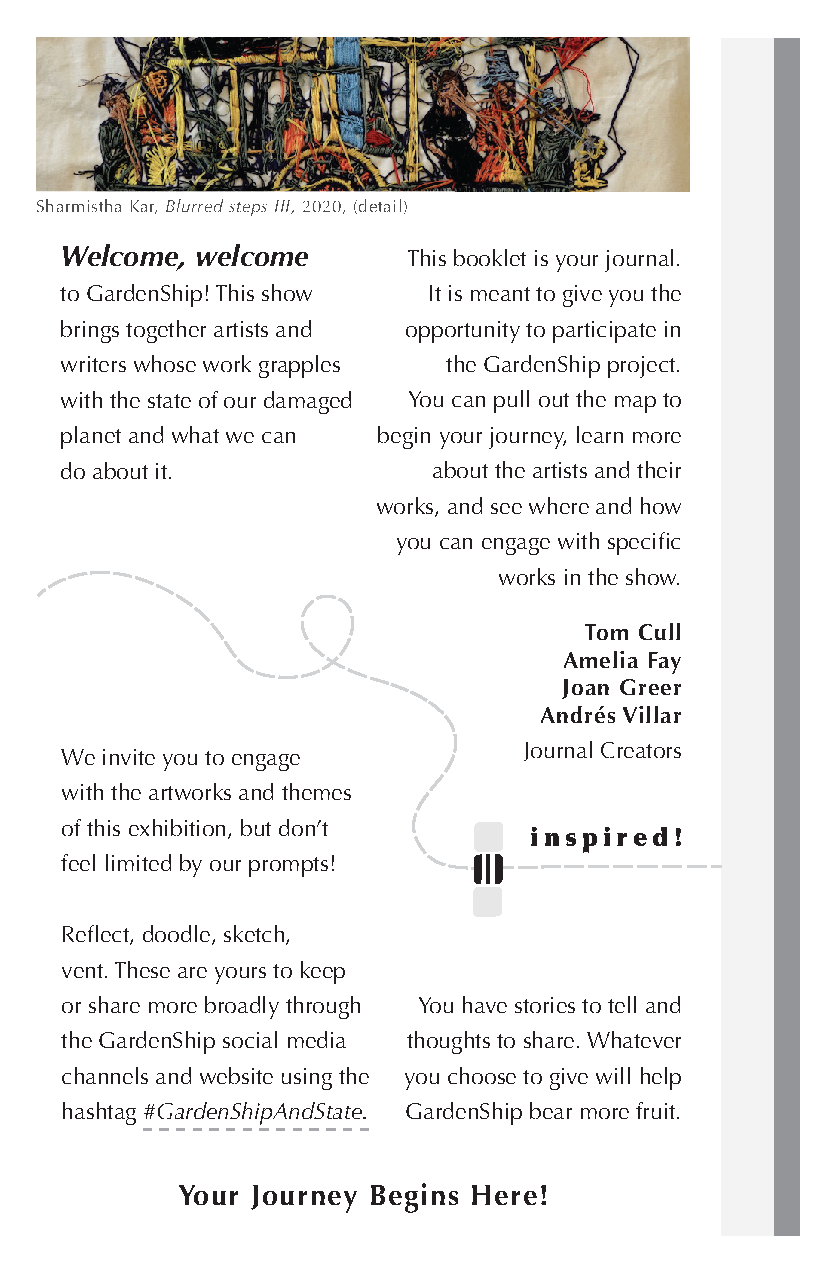
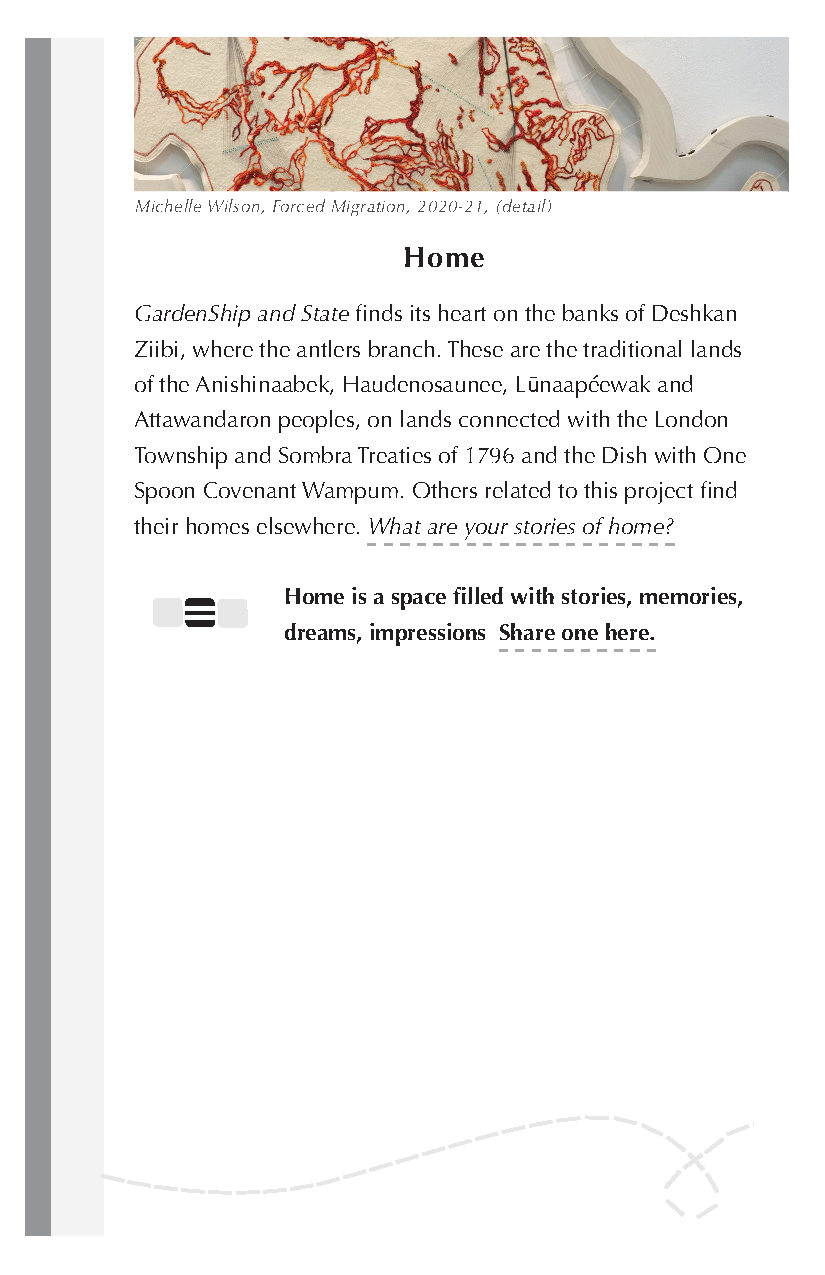
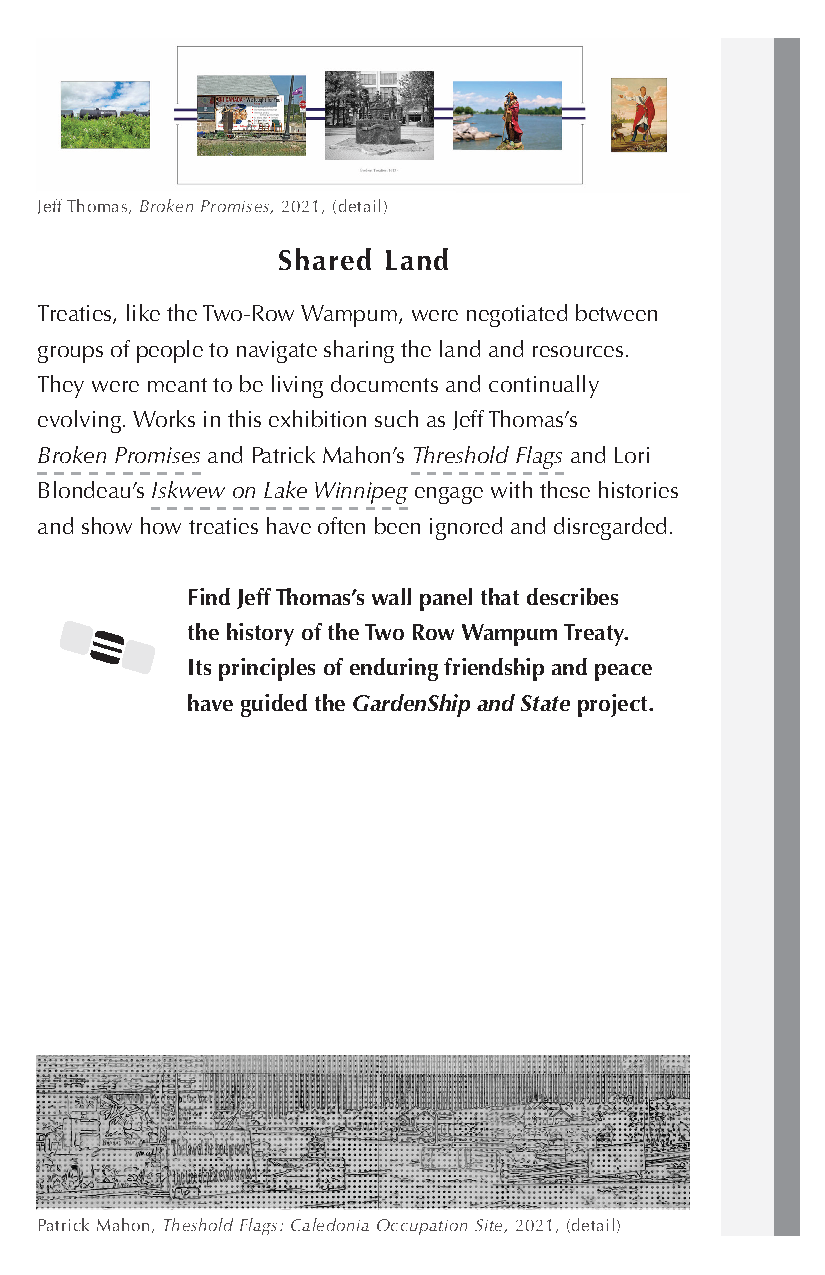
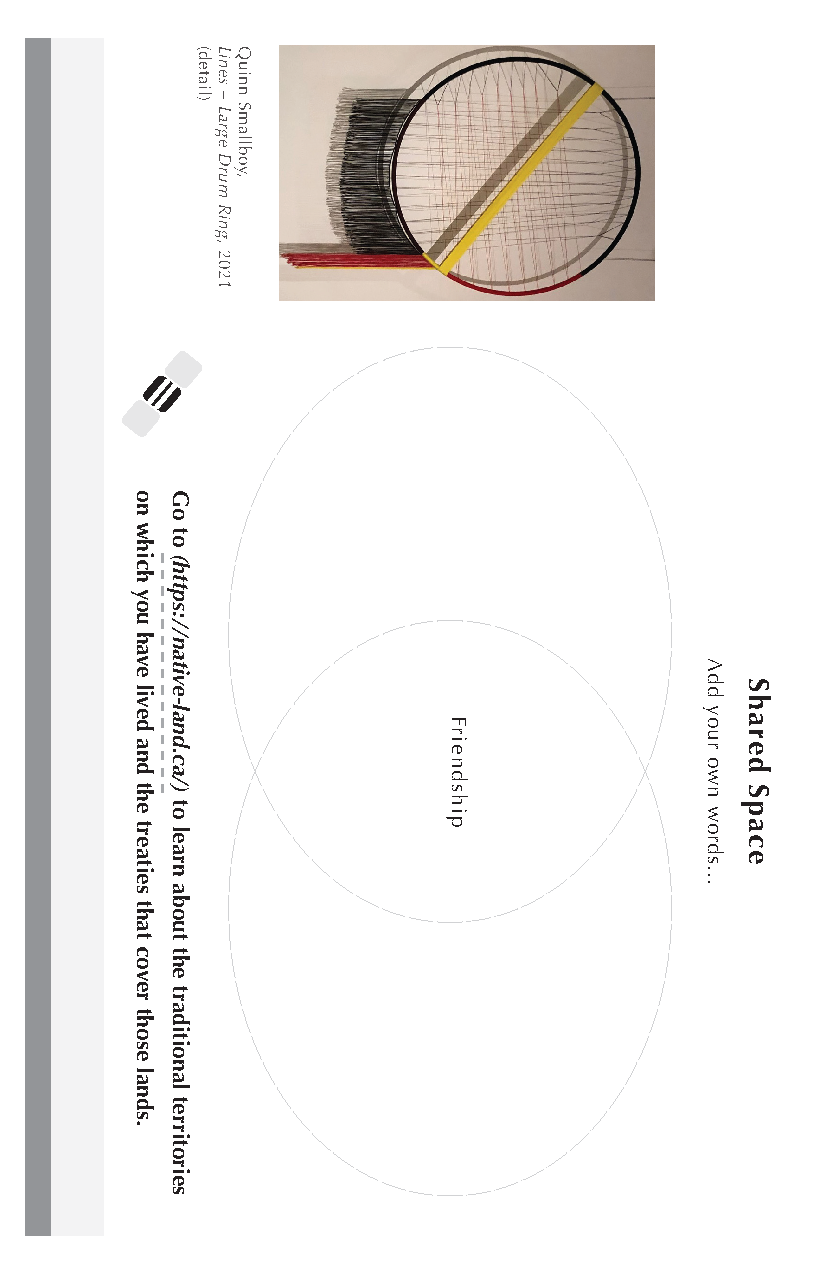
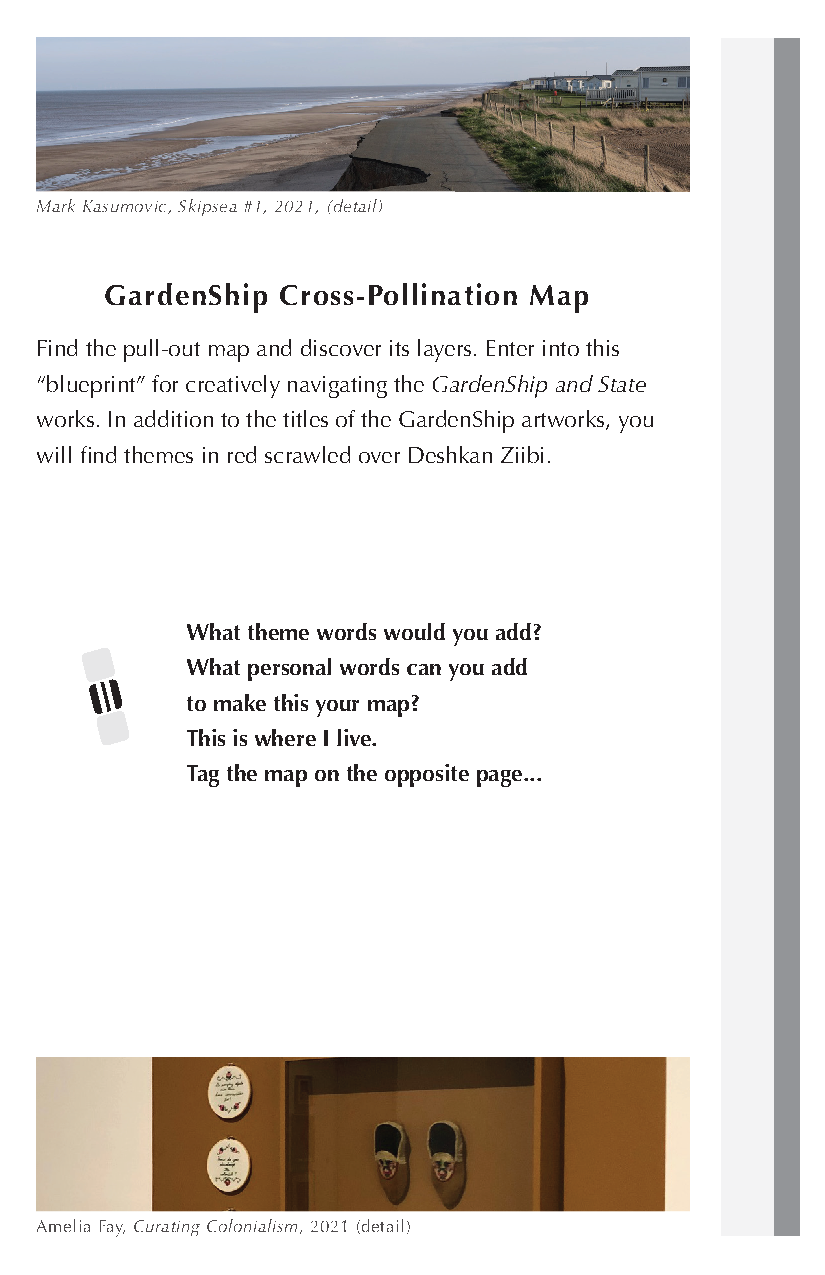
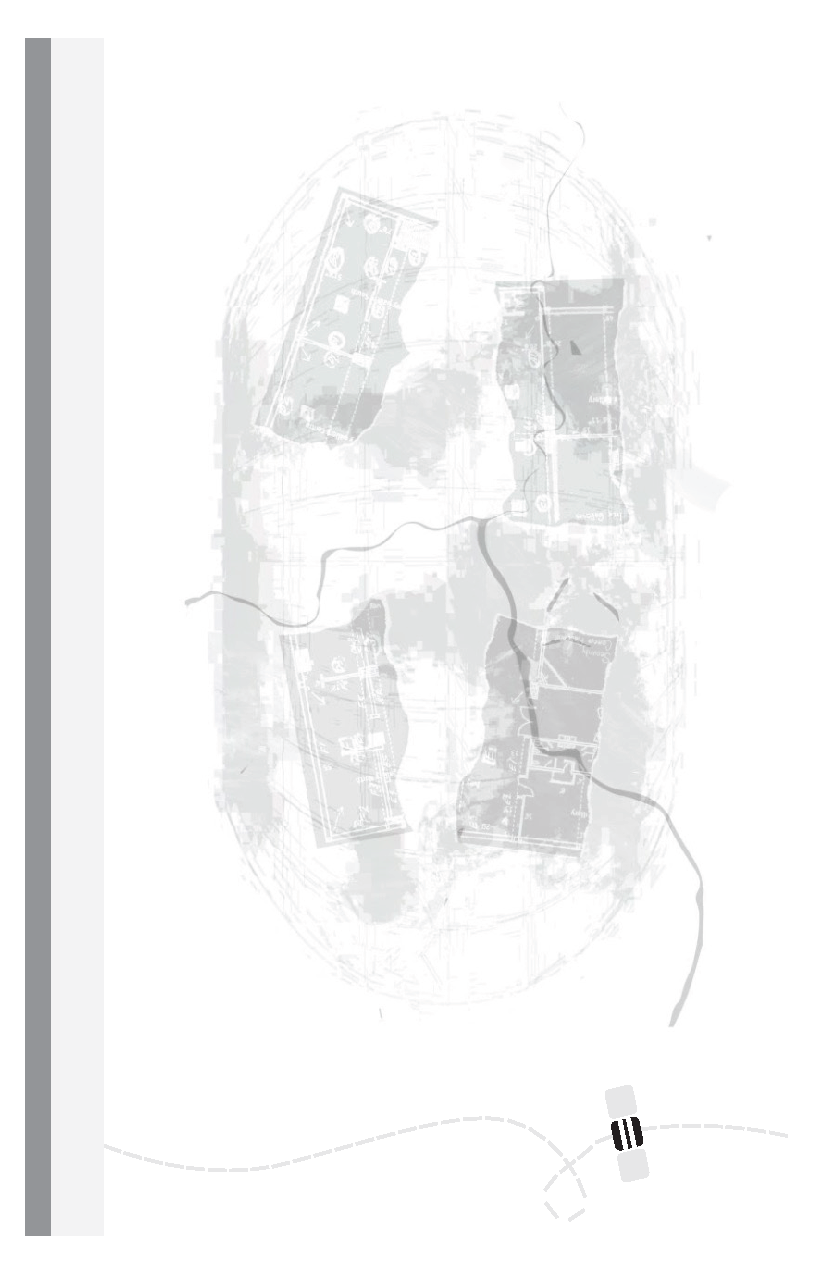
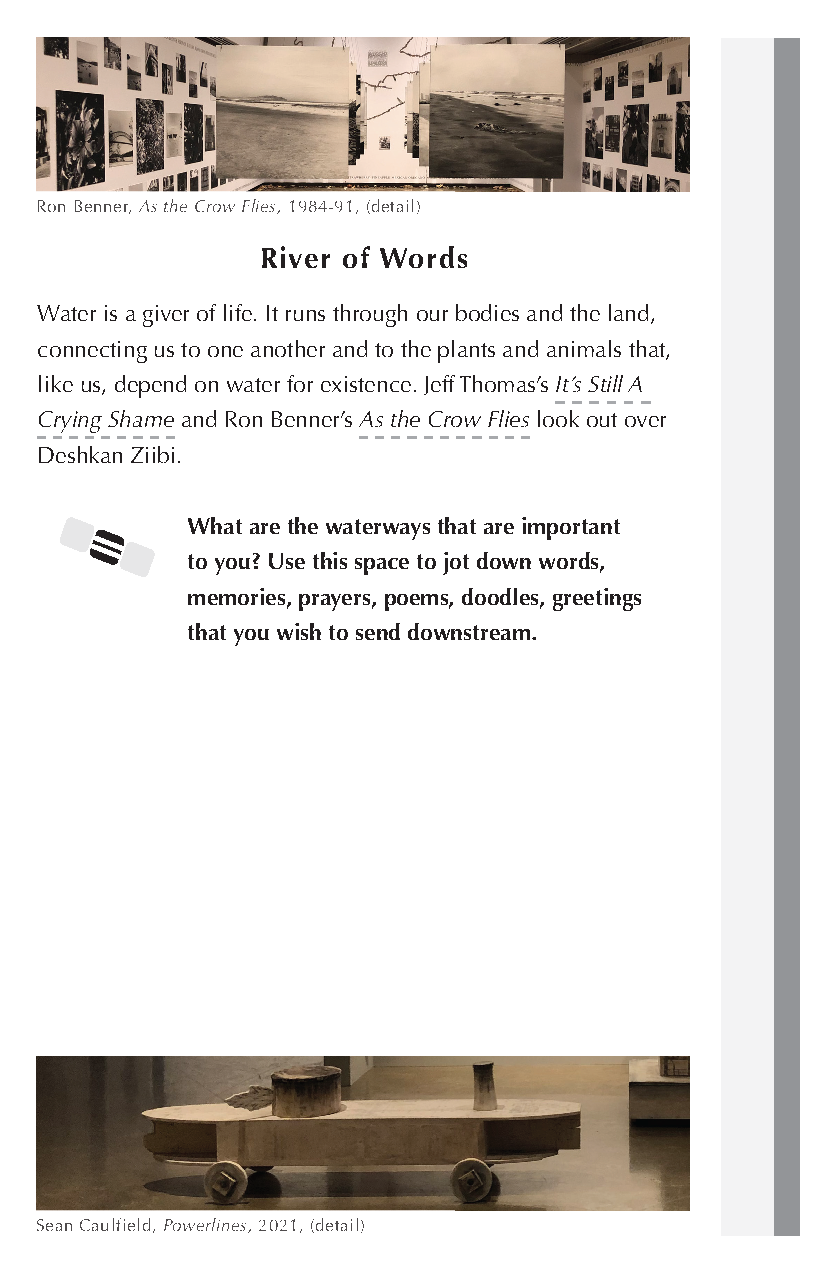
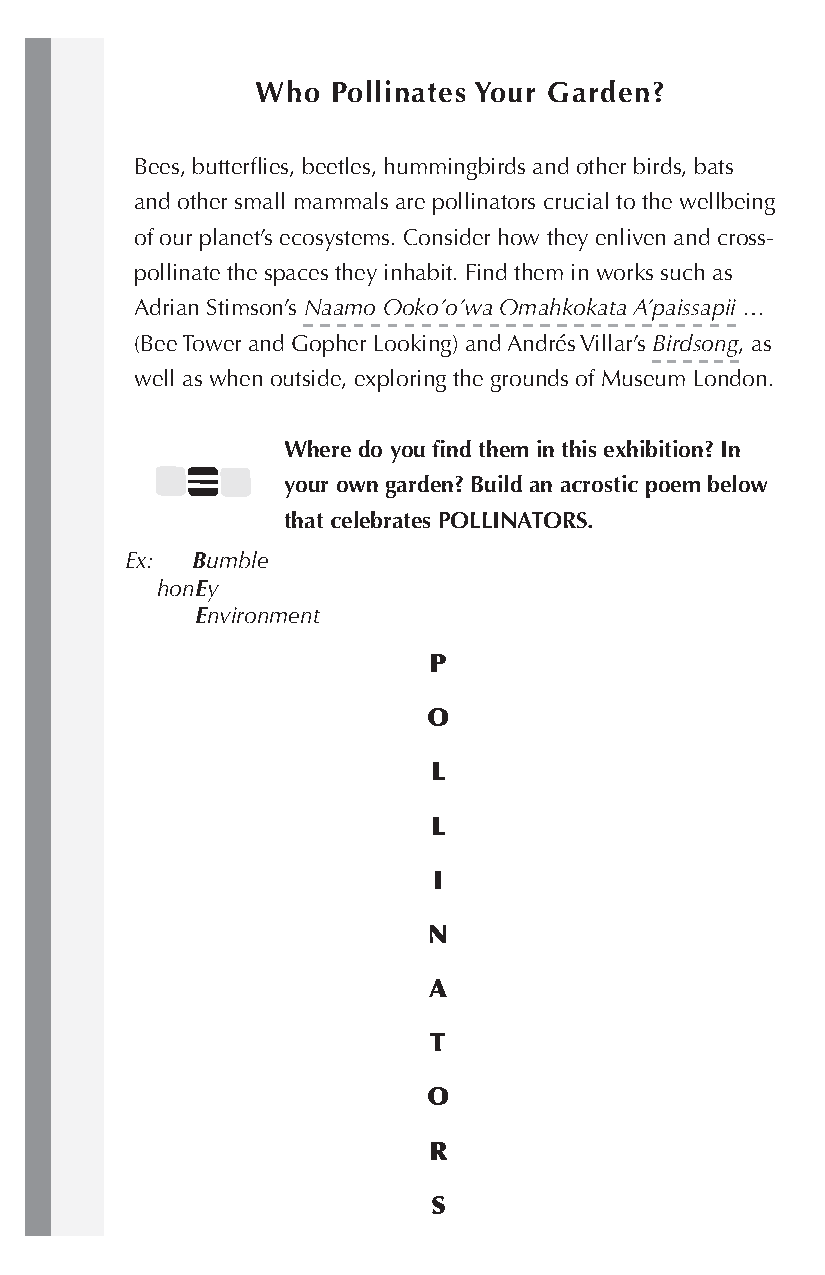
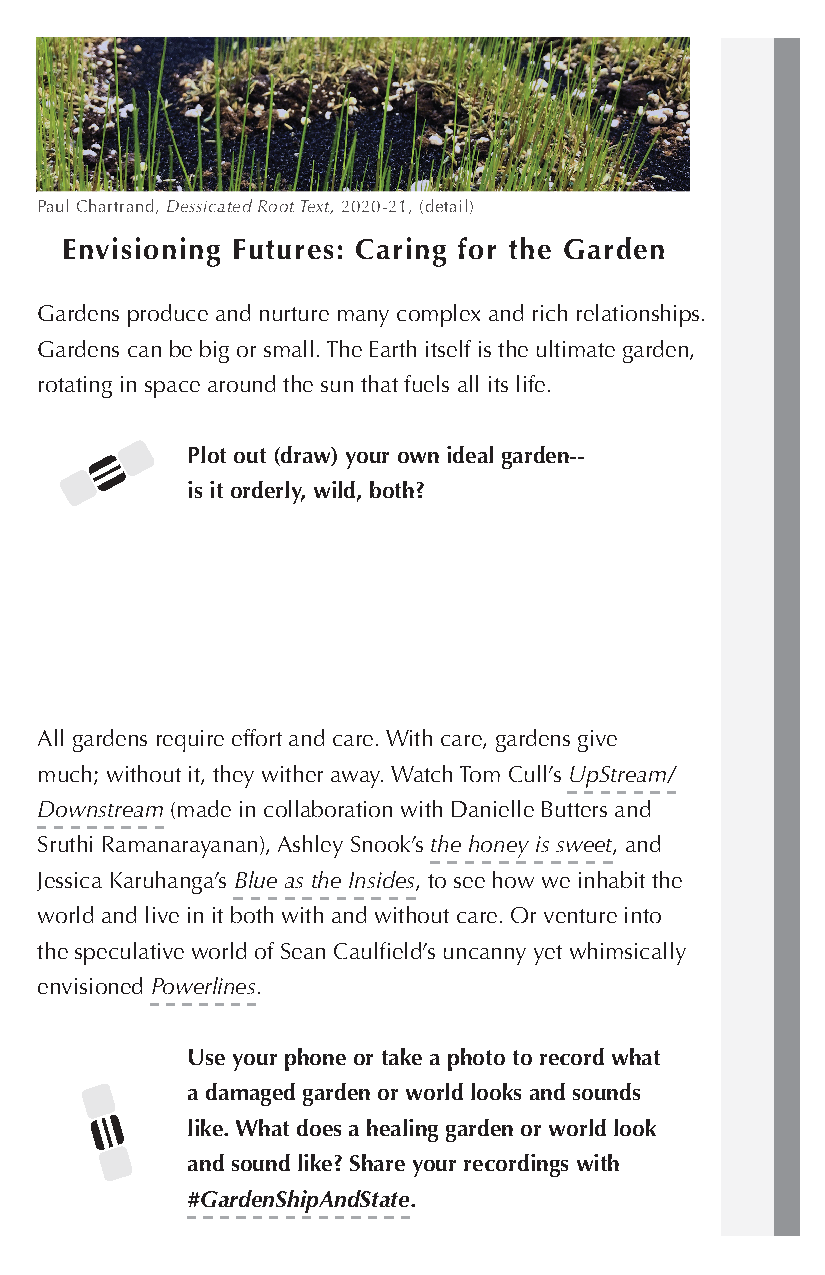
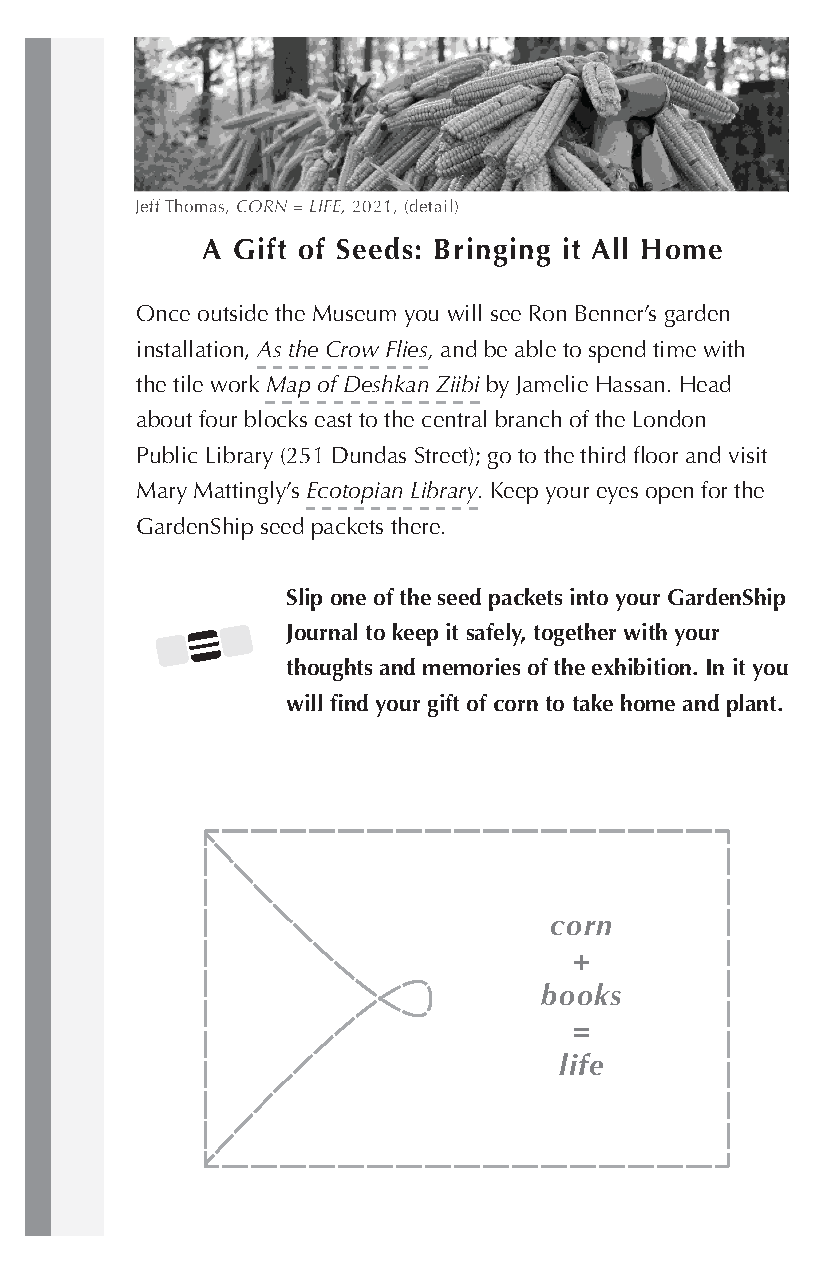
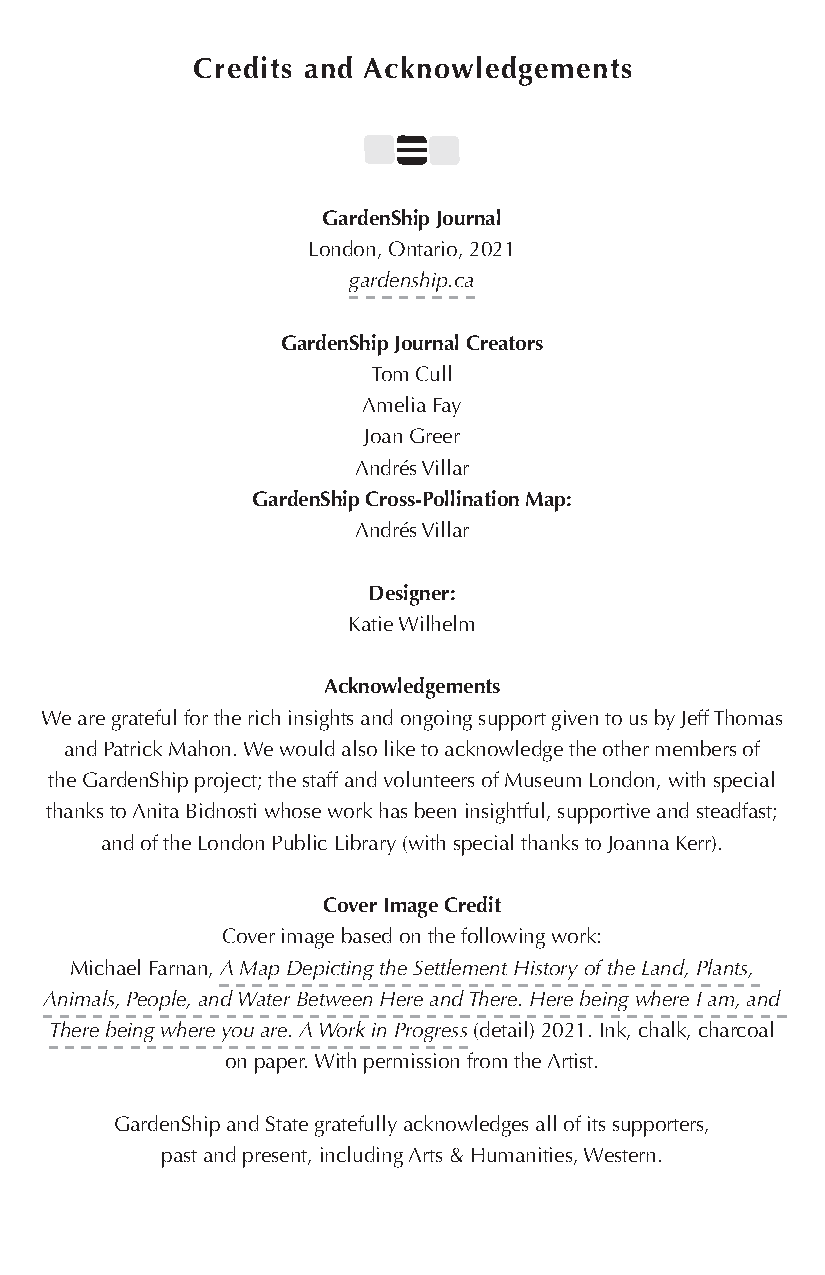
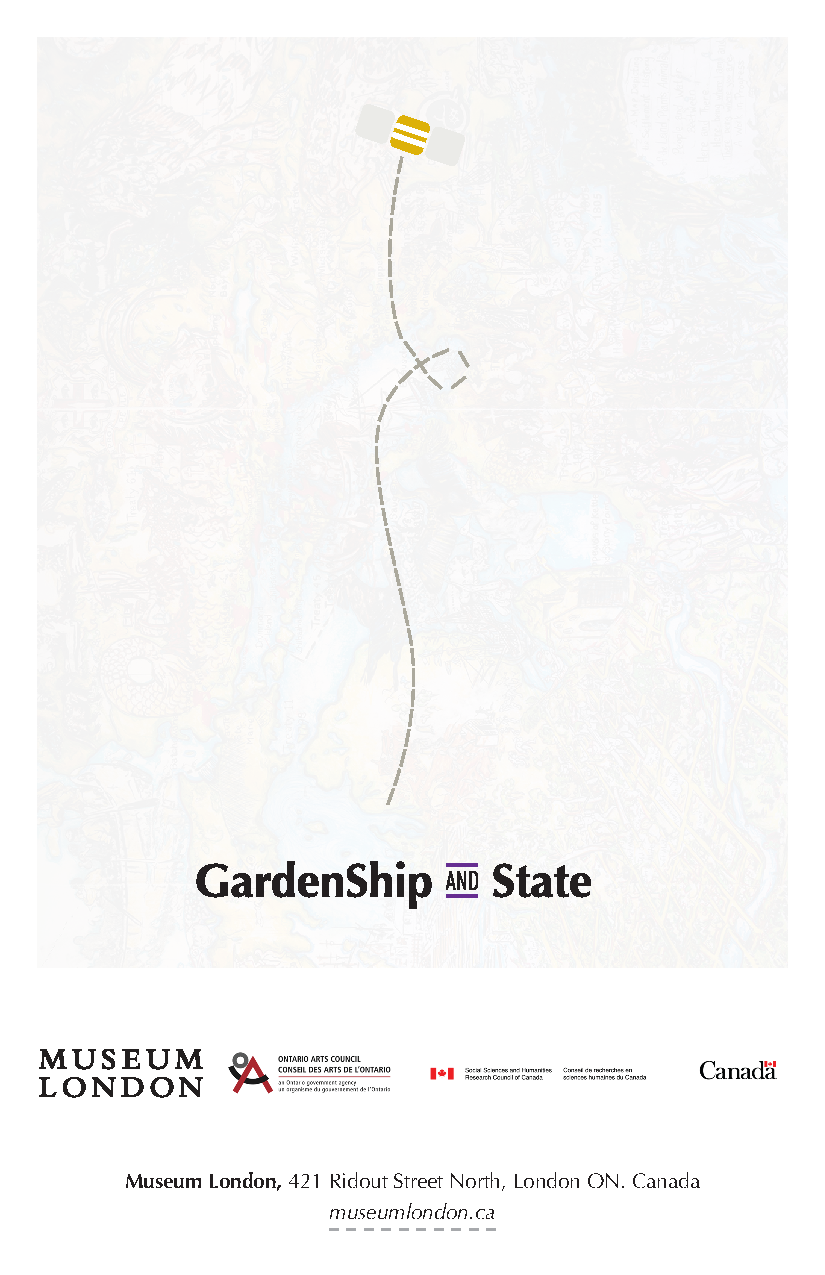
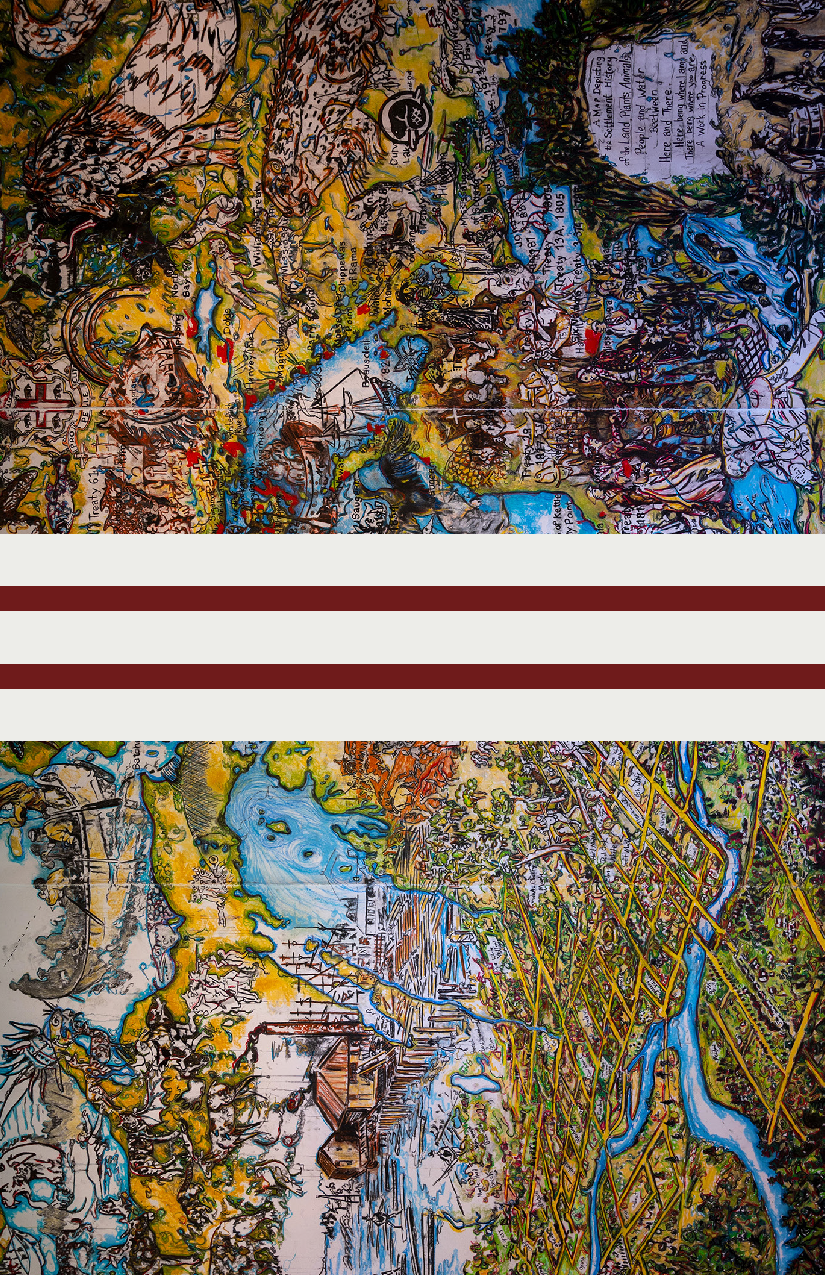
About the GardenShip Journal
“An innovative take-away brochure that encourages creative engagement.”
The GardenShip Journal was created by project collaborators Tom Cull, Amelia Fay, Joan Greer, and Andrés Villar, and designed by Katie Wilhelm, as a personal guidebook and a space for reflecting upon and engaging with the works and themes of the exhibition.
It was available in print within the exhibition, as well as at the Central Branch of the London Public Library, within Mary Mattingly's Ecotopian Library installation. In that location, all were welcome to pick up a corn seed packet for planting in their home garden.
“Through work comprising textiles, photography, sculpture, video, gardening, and installation, the artists in this exhibition engaged issues of decolonial critique, environmental activism, and protest against government and industry complicity in the ongoing climate crisis.”
GardenShip at IndigenArt
GardenShip and State created a pop-up gallery at the IndigenArt market in Downtown London in November 2021, curated by Savanah Sewell and Katie Wilhelm.
Services
Testimonial
“We had the pleasure to work with Katie along with a large team from our GardenShip and State exhibition at Museum London. Together, we developed an innovative take-away brochure that encourages creative engagement by audiences in response to the show.
Katie Wilhelm was wonderful to work with on this complex initiative: she is organized, highly skilled, and extremely professional.
And her capacity as a communicator and someone who can quickly and beautifully synthesize ideas and aspirations within a group — in our case, a group that is committed to decolonization and social justice – is inspiring.”


